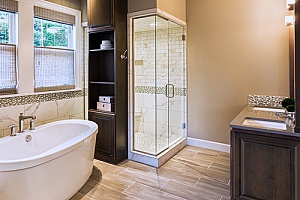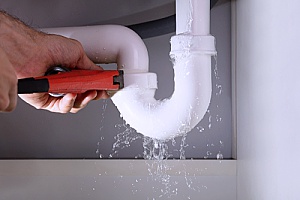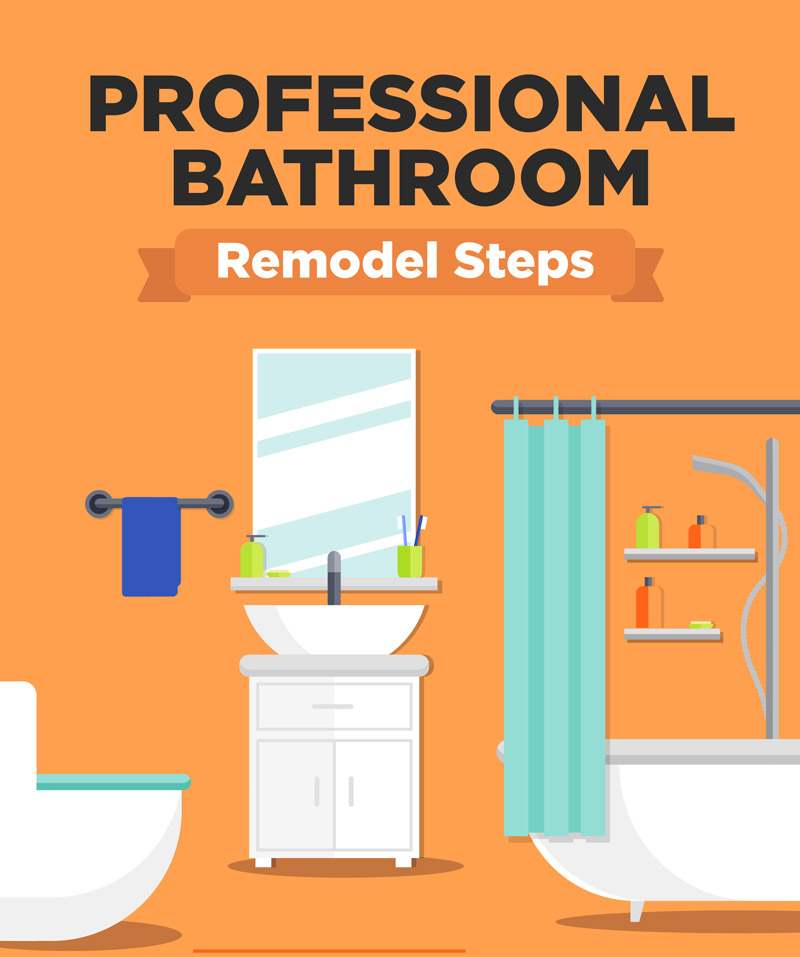 The amount of time it takes to complete a bathroom remodel depends on a number of factors, such as the size of the bathroom, the complexity of the project, and availability of materials and contractors. Your bathroom remodeling contractor can give you an estimated start and completion time based on your specific project.
The amount of time it takes to complete a bathroom remodel depends on a number of factors, such as the size of the bathroom, the complexity of the project, and availability of materials and contractors. Your bathroom remodeling contractor can give you an estimated start and completion time based on your specific project.
How Long Will My Bathroom Remodel Take to Complete?
As a very general rule of thumb, it takes about two to three weeks to complete a bathroom remodel that requires no plumbing or electrical changes. This time frame is typical for an average-sized bathroom in Fairfax and includes replacing tile, installing a new vanity and toilet, and painting. No permits and inspections are necessary.
If you are thinking about implementing more modern bathroom remodeling ideas, plan on several more weeks, at least. An average hallway bathroom of 40 square feet takes at least four to five weeks, approximately. For a very large bathroom, the project can take a couple of months or more to be fully completed. You can save time and cost if you have two bathrooms remodeled at the same time.
Special features can add to the total bathroom remodel process. For example, custom glass shower doors that need to be templated and installed can take three weeks or more to arrive from the day they are templated.
Professional Bathroom Remodel Process
The size of the bathroom limits the number of tradespeople who can be working on the remodel at the same time. Each trade normally arrives on set days and no other tradesperson can work on those days. Oftentimes, there is simply not enough space to accommodate all of the people and their tools and equipment. With that in mind, let us take a look at the bathroom remodel process.
1. Initial Consultation
Before starting your bathroom remodeling journey, it is important to meet with a reputable contractor to discuss your project. You should get a ballpark idea from each contractor you are considering before you get too far into the details. A contractor will likely tell you that a complete bathroom renovation costs more than people expect. The cost and time it takes to complete will depend on the materials you use and how extensive the project is. Take as much time as you need in the consultation process to get comfortable with a contractor.
2. Measurements
 After the initial consultation is complete, the contractor will need to gain an understanding of the bathroom they are working with. The contractor will take measurements, evaluate the existing plumbing and electrical supply, and determine the extent of demolition that may be needed before renovating the bathroom.
After the initial consultation is complete, the contractor will need to gain an understanding of the bathroom they are working with. The contractor will take measurements, evaluate the existing plumbing and electrical supply, and determine the extent of demolition that may be needed before renovating the bathroom.
One way to save money on the remodel is to select new fixtures that work with your existing plumbing. If your remodel plans include gutting and changing the bathroom floor plan completely, your cost goes up. The contractor will evaluate what may be involved in the construction and take notes and measurements to make sure the new floor plan works within the space allotted. Knowing what walls may have to come down or be built, where the plumbing and electrical supplies are situated is critical to getting accurate estimates from the contractor.
3. Materials
The best way to ensure smooth project completion is by making decisions on your tile, fixtures, and flooring early on in the process. By selecting all of your finished materials at the planning stage, you will save yourself time and money while having peace of mind knowing the materials will match before the remodel. Do not hesitate to ask your contractor if they can pass along to you any discounts on fixtures and materials, and find out if they have access to warehouse clearance and wholesale items.
If you make changes once the project begins, it will add to your cost and can create significant delays waiting for materials that are not readily available when not procured ahead of time. If you plan to replace your bathtub or shower pan, your contractor may need to make a lot of adjustments to the flooring, wall studs, and so forth, to support the new components.
4. 3D Renderings
Many professional remodeling contractors can provide you with 3D renderings of your planned bathroom remodel. This preview is a fantastic opportunity for you to make last-minute changes to design and materials before the project gets underway. Once the project begins, the cost of making changes can increase significantly; therefore, it is important to visualize the project before it goes into production.
5. Permitting
The bathroom remodeling project must conform to state and local building codes. Your professional contractor will ensure that the project passes any necessary inspections such as plumbing and electrical as the project proceeds. These permitting processes can take several days, depending on the schedules of the inspectors; however, the contractor will work to ensure everything is in compliance leading up to the inspections.
6. Demolition
Bathroom demolition can begin fairly quickly once the power and water supplies are turned off. Your bathroom remodeling contractor will proceed with the demolition of the walls, floor, and ceiling, as well as any fixtures that will be replaced. If any digging is required for any reason, the contractor will call Miss Utility (811) on your behalf before doing so.
7. Plumbing
 Your contractor will need to install any new plumbing early in the project in order for the fixtures to be installed correctly. The bathroom construction plan will show where each new feature will go, such as sink, shower, bathtub, etc. They will also replace old piping in the bathroom if needed and test that it is connected properly to the water supply.
Your contractor will need to install any new plumbing early in the project in order for the fixtures to be installed correctly. The bathroom construction plan will show where each new feature will go, such as sink, shower, bathtub, etc. They will also replace old piping in the bathroom if needed and test that it is connected properly to the water supply.
8. Electrical
Once the plumbing is complete, it is time for the contractor to replace faulty wiring and bring it up to code. Wiring for new electrical fixtures will be installed, as well as for the overhead lights and ceiling fans. Multiple configurations can be set up for the wiring, including the ability for the lights to be dimmed or turned on or off from two different light switches.
9. Walls
Once all of the plumbing, electrical, and inspections are completed, the new walls can be installed. A new cement board or backer board will be installed in the wet areas like the shower, tub, and sink surrounds, and wherever new tile will go up. If called for by the plans, any new drywall will be installed and later painted.
A bathroom remodel frequently involves new floor and wall tile. The tile needs to adhere to the wall or the subfloor and then be left to cure for 24 hours. Then, the tile will be grouted, and the grout needs another 24 hours to dry. Tiling can take several days to complete before it can be cleaned.
10. Vanity, Sink, Plumbing and Light Fixtures
After most of the bathroom’s foundation is in place, your pre-selected materials for these components will be installed. This includes the sink/vanities, toilets, showers, tubs, lights, and other fixtures. Do not forget other items like towel bars, rings, toilet paper holders, and mirrors.
11. Touch Up Paint
The last task is to touch up the trim and other painted areas that may have been damaged during the project. It is important to ensure that the paint is completely dry before the bathroom is used. If not, the paint will begin to crack and will need to be removed before another layer can be applied.
Contact a Professional Fairfax Bathroom Remodeling Contractor for More Information
As you can now understand, a bathroom remodeling project involves more than many people expect. It is easy to underestimate the cost and time it takes to have a professionally remodeled, beautiful new bathroom that adds value and years of enjoyment to your home. Speak to a professional Fairfax bathroom remodeling contractor about your plans and schedule a free consultation.









































